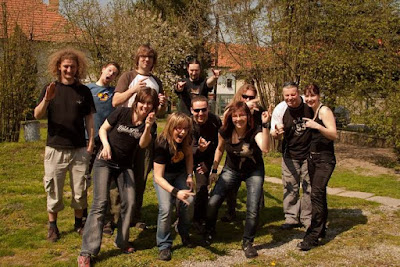So many weird and wonderful bands come from French-speaking eastern Canada, including prog-thrashers Voivod, avant-death pioneers Gorguts, tech-death speedsters Cryptopsy, all of the above characteristics in the great Martyr, and my favorite of them all from Montreal, avante-garde grab bag Unexpect. Along with Japan's Sigh, Sweden's Pan-Thy-Monium and California's Mr. Bungle, Unexpect rounds out the four "experimental" metal bands in the top 100, and of the four, they're probably musically the weirdest. True to their name, their music is characterized by sudden and disorienting changes of direction, both in style and rhythm. There's a lot of black metal in their sound, and also a lot of Kurt Weill-esque dark cabaret, but one can also hear classical/art nusic, electronica, tech/prog, opera and jazz abruptly and at any time. The schizophrenic compositions are counterbalanced by incredibly precise execution and, when taken in combination, make for one of (if not the) most impressive bands I've ever heard.
2006's In A Flesh Aquarium is a special album, with one mind-blowing song after another. As such, it's tough to pick one to share with you. "Desert Urbania", the first clip included below, is as good a one as any, as it displays their characteristic dichotomy of chaotic composition and pristine performance. The song opens with solo piano in a slow 4, sparsely accompanied by underwater-sounding guitar squiggles, and slowly built on by the addition of bass and cymbals, followed by drums, and finally the whole rhythm section on some prog whole-note chords at 1:04 for a few seconds. Then a brief piano interlude at 1:12, during which you get the sense that something terrifying is about to happen. Six seconds later all hell breaks loose, with the entrance of the entire band, including three vocalists and violin over a suddenly faster tempo and uneven phrases, punctuated by breaks that are somewhere between beatnik jazz and circus music. It's hard to describe all the wild changes that occur over the following three and a half minutes or so but somehow, they manage to feature everybody in the well-populated band. There's an awesome hemiola right at 5:00 and then another one at 5:24, which begin the slow wind down to the end as instruments start to drop out until we're left with just the piano again, which sags and slows to the end, like an animatronic creepy clown running out of juice.
Up next is "Summoning Scenes", from the same album, but here performed impressively live in studio for Fearless Music in New York.





